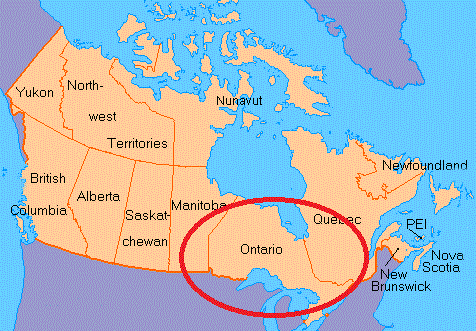
Northern Ontario
Within the northern part of the Ontario province in Canada there exist many remote communities which no doubt have difficulty connecting to a power grid. For this reason most of these communities will obtain electricity through diesel generation and some may not have electricity at all.The Problem
The conference paper referenced looks at ways to optimise a microgrid for such communities so as to minimise costs and also emissions as much as possible. This is done through mathematical formulation and takes into account fixed and running costs for each component of the microgrid. The authors look at several different microgrid configurations for a particular case study in the northern parts of the Ontario province in Canada. The results obtained through the study can in essence then be applied to other remote villages and towns in similar situations.
The Solution
The study looks at four cases of microgrid configurations and compares for all of them lifetime cost ($) and emissions produced (kg).
The optimum configuration wants these to be as low as possible.
In the table below the results for each microgrid can be viewed, where ‘NPV’ represents lifetime costs and ‘l.Eann-op’ is emissions.
(How these parameters are obtained can be viewed in the paper [i]).

Case 1: Diesel generators only:
- α1=600kW diesel generator; α2,3=1000kW diesel generator.
Case 2: Diesel generators with battery storage unit:
- α1=600kW diesel generator; α2,3=1000kW diesel generator; α4=1000kW battery energy storage unit.
Case 3: Diesel generators with battery storage unit and renewable sources:
- α1=600kW diesel generator; α2,3=1000kW diesel generator; α4=1100kW battery energy storage unit; α5=1100kW wind power; α6=1430kW photo-voltaic (PV) power.
Case 4: Hypothetical microgrid built from scratch for optimal performance:
- α1=200kW diesel generator; α2=300kW diesel generator; α4=600kW battery energy storage unit; α5=600kW wind power; α6=650kW PV power.
The full study including all mathematical formulae, results and explanations can be found in the referenced paper: “Design and operation of a remote microgrid” by S. Mizani and A. Yazdani.



